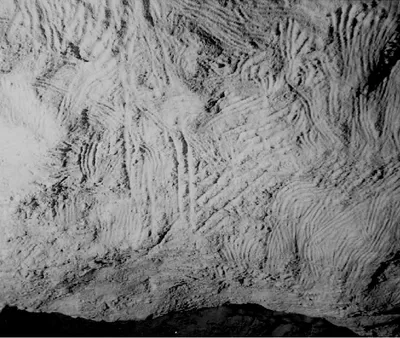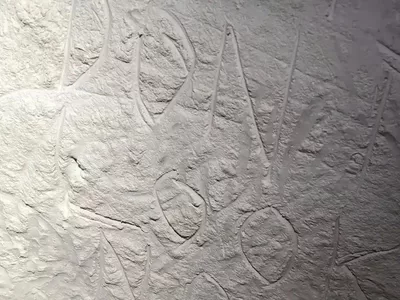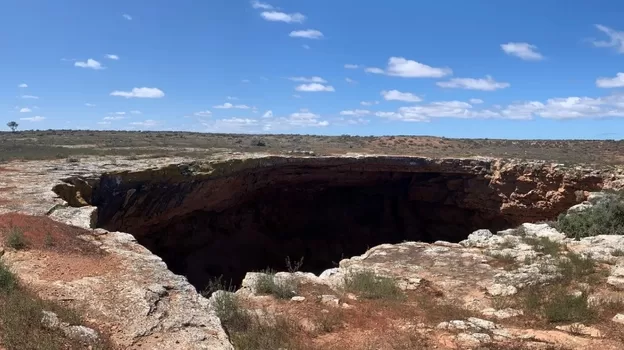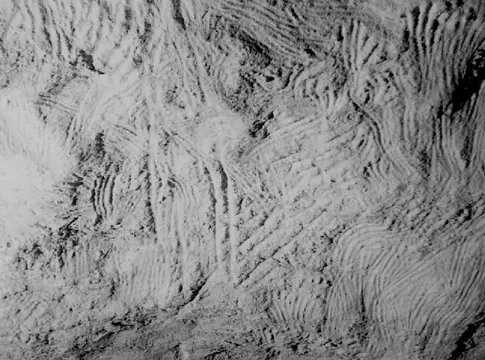Koonalda Cave Vandalism: Desecration of an Ancient Aboriginal Treasure
Deep beneath the windswept expanse of the Nullarbor Plain lies Koonalda Cave, one of the most significant archaeological and cultural sites in Australia. Carved into its walls are intricate lines and patterns believed to be over 22,000 years old, or 1,000 generations — evidence of some of the earliest human presence on the continent.
However, in a shocking act of vandalism in late 2022, these ancient engravings were defaced, causing outrage among Aboriginal communities, archaeologists, and cultural heritage advocates.
The Significance of Koonalda Cave
Koonalda Cave is more than just a site of ancient art; it is a spiritual place and a touchstone for the stories and traditions of Aboriginal peoples, particularly the Mirning people, the traditional custodians of the land.
The engravings, a series of geometric lines, are thought to represent spiritual symbols, maps, and possibly communication methods between early Indigenous groups. They also reflect the intense relationship between the people and the harsh desert environment surrounding the cave.
Anthropologists and archaeologists argue that the site provides invaluable insight into the artistic and cognitive abilities of early humans. The Nullarbor’s limestone caves, with their isolation and natural protection, have allowed these engravings to survive millennia—until now.



Available on Amazon: Rock Art Science: The Scientific Study of Palaeoart, 2007 by Robert G. Bednarik
National Heritage Listing
The 2014 inscription for the National Heritage Listing of Koonalda Cave reads:
“Koonalda Cave is of outstanding heritage value to the nation for its role in transforming our contemporary understanding of the extraordinary age of Aboriginal art, archaeology and occupation in Australia. The place is of great importance for its contribution to the history of Aboriginal occupation and is of particular significance for the Mirning people.”
“Koonalda cave contains exceptionally well preserved markings and evidence of silica mining by Aboriginal people. The cave was the first site identified in Australia that had Aboriginal ‘art’ in an area beyond the reach of natural light.”
“Prior to the study of Koonalda Cave by archaeologist Dr Alexander Gallus, the earliest date for human occupation in Australia was 8,700 years ago. In 1956 Gallas controversially dated the archaeological remains and finger markings at Koonalda to 22,000 year ago. Later confirmation of this date using radiocarbon technology, transformed the scientific community and publics’ understanding of Australian and World prehistory.”
“National Heritage listing for Koonalda Cave recognises its place in Australia’s history and ensures this long and rich connection of Aboriginal Australians with the Nullarbor landscape is protected and celebrated for future generations.”
Advertisement:
The Vandalism Incident
In December 2022, it was discovered that large portions of the Koonalda Cave’s walls had been deliberately vandalized. Reports indicated that the perpetrators broke into the protected area by forcing open a metal gate. They used their hands to etch graffiti into the sacred walls, scrawling offensive words and modern symbols over irreplaceable ancient markings.
One phrase scrawled on the walls, “Don’t look now, but this is a death cave,” stunned authorities and the Mirning people. As the artwork was defaced by these senseless acts, generations of cultural history were damaged in mere moments.
Cultural and Legal Fallout
The Mirning people expressed heartbreak and frustration following the vandalism. “These engravings aren’t just art; they’re our stories, our ancestors speaking through time,” said one spokesperson from the Mirning community.
Aboriginal leaders called for greater protections and stricter penalties for those found guilty of damaging sacred sites. South Australia’s Aboriginal Affairs Minister Kyam Maher described the incident as a “crushing loss” and a desecration of Australia’s shared heritage.
The site was listed under the Aboriginal Heritage Act 1988, but critics pointed out that the protections in place were inadequate. While it is illegal to access Koonalda Cave without permission, the minimal security—just a gate—was not enough to deter the vandals.
Aboriginal communities have long argued for stronger legal frameworks to protect their cultural sites, which are often vulnerable to trespass and destruction.
The South Australian government increased security and surveillance around culturally significant sites following the Koonalda Cave incident. Premier Peter Malinauskas committed to working closely with Aboriginal communities to ensure such acts are not repeated, but the damage to Koonalda Cave is irreversible.


Irreparable Loss of Cultural Knowledge
Unlike art on canvas, engravings in limestone cannot be repaired. The vandalism has disrupted the delicate connection between present generations of Aboriginal people and their ancestors. Cultural custodians see the damage as more than just a physical loss; it is a violation of a sacred space, like tearing pages from a holy book.
The damage also impacts archaeological research. The site had provided clues about early Aboriginal migration patterns, environmental adaptation, and cultural expression. These insights are now lost, with graffiti marks obscuring the ancient lines etched by hands thousands of years ago.
Calls for Change
The vandalism at Koonalda Cave has reignited national debate about how Australia values and protects Indigenous heritage. Aboriginal leaders have called for more robust penalties for vandalizing sacred sites and demanded greater involvement in the management and protection of their cultural sites.
There is also a push to increase public education about the importance of these ancient places. Professor Claire Smith, an archaeologist at Flinders University, argued that “Australia needs to recognize these sites as equivalent to any ancient monument in the world, like Stonehenge or the pyramids.”
Many advocates stress that future protection efforts must come from collaboration between Aboriginal communities, archaeologists, and governments. Aboriginal people are the rightful custodians of these places, and their knowledge is essential to safeguarding Australia’s cultural heritage.
A Shared Responsibility
The vandalism of Koonalda Cave serves as a painful reminder that the cultural heritage of Aboriginal Australia belongs to all Australians. These sites are part of a shared history that predates European settlement by tens of thousands of years. The destruction at Koonalda is not just an attack on Aboriginal culture; it is a loss for the entire nation.
While the scars left by the vandals will never heal, the incident has sparked a renewed commitment to protecting and preserving Aboriginal heritage for future generations. Leaders across Australia are now working toward stronger cultural protections, recognizing that safeguarding these ancient sites is an essential step in reconciling with the past and honoring Indigenous knowledge.
Koonalda Cave, once a silent monument to Australia’s deep past, now bears the ugly marks of modern ignorance. Yet, the incident has also become a rallying cry for stronger protections and respect for Aboriginal heritage. For the Mirning people, it is a reminder of the fragility of cultural memory—and the importance of ensuring that future generations can still hear the voices etched into stone thousands of years ago.
As Aboriginal Elder Aunty Janine said, “We cannot undo what’s been done, but we can make sure it never happens again.”
This tragic event serves as both a wake-up call and a turning point. Whether Australia can rise to the challenge and give its ancient sites the protection they deserve remains to be seen—but what is certain is that these sacred places must be safeguarded, not just for the Mirning people, but for all of humanity.
One can only imagine the disrespect these vandals have for Australia and for themselves, and wonder if the ancestors visit them in their sleep.
Related stories
Our Indigenous Art section
Aboriginal Warrior Pemulwuy and the Fight for Repatriation
Stuff the British Stole: Antiquities and Repatriation
Australian Aboriginal spears taken by James Cook repatriated
Advertisement:




